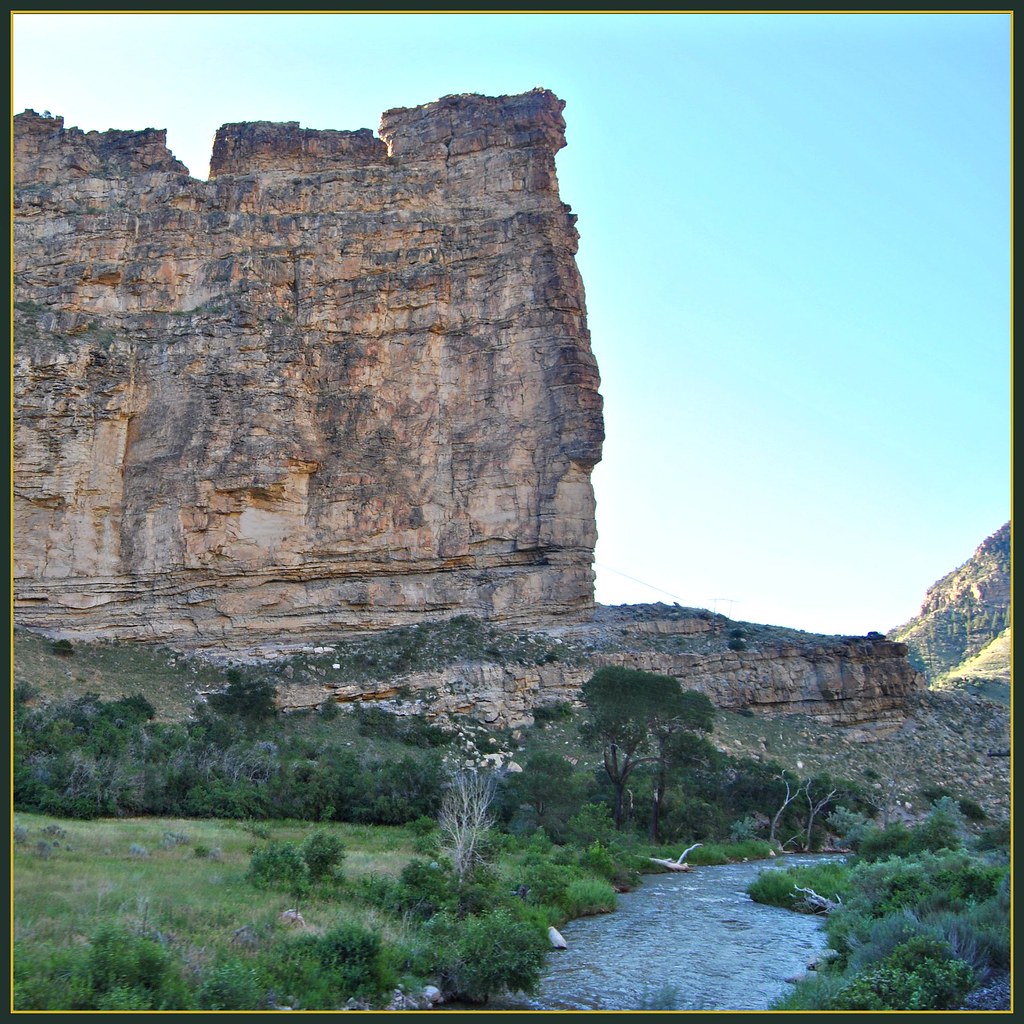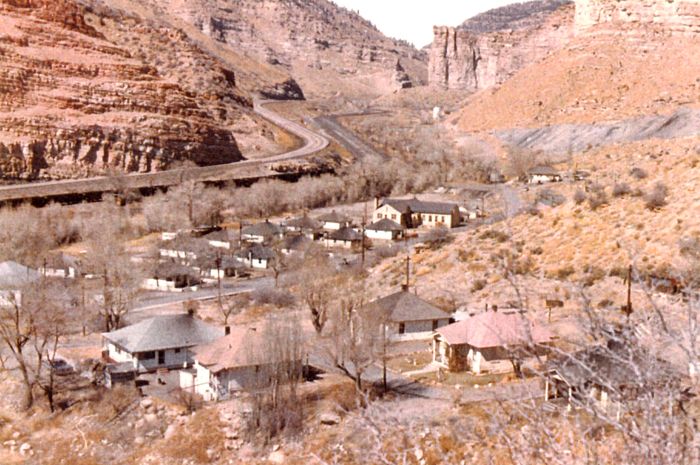
The Silent Sentinel and the Vanished Town: Unearthing the Story of Castle Gate, Utah
In the rugged, sun-baked landscape of Utah’s Price Canyon, where the towering sandstone cliffs seem to stand as eternal sentinels, lies a place named Castle Gate. Today, for many travelers speeding along Highway 6, it’s little more than a dramatic geological formation, a monumental natural arch that once framed the entrance to a vital coal-mining district. But beneath the veneer of tranquil beauty and the modern highway, Castle Gate harbors a profound and tragic history, a story etched not just in stone, but in the collective memory of a state forged in industry and human endeavor. It is the tale of a vibrant, company-controlled boomtown that rose and fell with the fortunes of coal, culminating in one of America’s deadliest industrial disasters, and then, remarkably, was systematically erased from the map, leaving behind only echoes and a powerful memorial.
The story of Castle Gate begins, as many stories in the American West do, with discovery and enterprise. In the late 19th century, prospectors and geologists recognized the immense potential of the coal seams hidden within Carbon County’s mountains. The arrival of the Denver and Rio Grande Western Railroad in the 1880s provided the critical link to markets, and soon, coal camps began to dot the landscape. Castle Gate, named for the imposing twin rock formations that resembled the bastions of a medieval fortress, was destined to become one of the most significant.
By the early 20th century, Castle Gate was a bustling, purpose-built company town, established and wholly owned by the United States Fuel Company. It was a classic example of industrial paternalism, a self-contained world where the company provided everything: housing, a general store, a school, a doctor, and even entertainment. This model, common in mining regions, offered stability and employment but also exerted immense control over the lives of its residents. Wages were often paid in company scrip, redeemable only at the company store, ensuring a closed economic loop.

"Castle Gate was more than just a place to work; it was a way of life," explains Dr. Robert S. McCaffrey, a historian specializing in Utah’s industrial past. "The company was your landlord, your grocer, your employer, and sometimes, your de facto government. For many, especially the waves of immigrants who arrived seeking opportunity, it was a lifeline, but it came with strings attached."
And those immigrants poured in. Castle Gate became a melting pot, a microcosm of the American dream and its harsh realities. Greeks, Italians, Japanese, Slavic peoples, Finns, and Mexicans arrived, drawn by the promise of steady work, however dangerous. They lived in segregated housing blocks, their diverse languages and customs blending into the unique culture of a mining town. Their labor fueled the nation’s burgeoning industries, providing the coal that powered trains, heated homes, and forged steel.
Life in Castle Gate was arduous. The work underground was physically demanding, dangerous, and often dark, both literally and figuratively. Miners faced constant threats: cave-ins, explosions, and the insidious "black lung" disease. Safety regulations, while improving, were often lax by modern standards, and the drive for production frequently outweighed concerns for worker welfare. The roar of machinery, the clang of coal cars, and the pervasive dust were the soundtrack to their lives.
Then, on a cold Saturday morning, March 8, 1924, that soundtrack was abruptly, catastrophically interrupted. At precisely 8:00 AM, a deafening roar ripped through Price Canyon. Mine No. 2, the heart of Castle Gate’s operations, exploded with unimaginable force. A massive plume of black dust and debris shot hundreds of feet into the air, visible for miles. The ground trembled, and the air was thick with the smell of burnt coal and death.
Inside the mine, 172 men were working their shifts. None would emerge alive.
The Castle Gate Mine Disaster remains the deadliest industrial accident in Utah’s history, and one of the worst coal mining tragedies in American history. The explosion, believed to have been triggered by an open flame igniting coal dust and methane gas, ripped through the labyrinthine tunnels, instantly killing most of the miners and sealing off any escape for the rest.
The immediate aftermath was a scene of unparalleled devastation. Wives, mothers, and children rushed to the mine portal, their faces etched with terror and disbelief. Rescue teams, including volunteers and federal mining experts, descended into the hellish darkness, but their efforts were grim and largely futile. They encountered scenes of horror: twisted tracks, shattered timbers, and bodies mangled beyond recognition. The sheer scale of the tragedy overwhelmed the small community.
"The collective grief was unimaginable," wrote a contemporary newspaper reporter. "Every family in Castle Gate, it seemed, had lost a father, a son, a brother, or a husband. The heart of the town was ripped out." The victims were overwhelmingly immigrant workers, leaving behind scores of widows and hundreds of orphaned children. Their names, from Papageorge to Suzuki, from Giacalone to Gomez, fill the somber roll call of the dead, a stark reminder of the human cost of industrial progress.

The disaster prompted investigations, calls for stricter safety regulations, and a profound sense of loss that would forever scar the canyon. Despite the tragedy, the United States Fuel Company, after a period of rebuilding and a brief closure, resumed operations. The town, though diminished in spirit, continued to exist for several more decades. New safety measures were implemented, and the mining continued, but the shadow of March 8, 1924, never truly lifted.
However, the forces that would ultimately lead to Castle Gate’s demise were broader than the disaster itself. By the mid-20th century, the demand for coal began to wane as other energy sources like oil and natural gas gained prominence. Mechanization in mining also reduced the need for a large workforce. The economic viability of company towns, with their extensive infrastructure and social services, became increasingly questionable.
In the late 1960s, the United States Fuel Company made the decision to close its operations at Castle Gate. Unlike many ghost towns that simply fade away, leaving dilapidated buildings and forgotten relics, Castle Gate underwent a deliberate and systematic dismantling. The company, wanting to avoid property tax liabilities and potential legal issues associated with abandoned structures, razed the town to the ground. Homes, stores, schools – everything was either moved, sold off, or demolished. The roads were ripped up, and the land was reclaimed. The intention was clear: to erase the physical evidence of Castle Gate, leaving no trace.
Today, driving through Price Canyon, one might easily miss the exact location where Castle Gate once thrived. There are no crumbling foundations, no spectral remains of a once-bustling main street. The highway now cuts through the heart of what was once a community. Only the majestic natural gate remains, standing as an indifferent witness to the human drama that unfolded beneath its shadow.
Yet, Castle Gate is not forgotten. Its memory is preserved in historical archives, in the oral histories of survivors and their descendants, and most poignantly, in a memorial site. Near the natural gate, a monument stands as a solemn tribute to the 172 men who perished in the 1924 disaster. It lists their names, their ages, and their nationalities, ensuring that their sacrifice is remembered. Flowers are often left there, a quiet testament to enduring grief and respect.
"The physical erasure of Castle Gate was an attempt to move on, to clean up the past," says Dr. McCaffrey, "but you can’t erase history, especially not one so profoundly tragic. The memorial ensures that the lessons learned – about industrial safety, about the rights of workers, about the human cost of progress – continue to resonate."
The story of Castle Gate is a powerful narrative woven into the fabric of Utah’s industrial heritage. It speaks to the relentless pursuit of resources, the hardships faced by immigrant laborers, the devastating consequences of industrial accidents, and the transient nature of human settlements built on the shifting sands of economic demand. It is a reminder that even in places where nature reigns supreme, human stories, both triumphant and tragic, leave an indelible mark.
As the sun sets over Price Canyon, casting long shadows across the ancient sandstone formations, the silence at Castle Gate is profound. It is a silence that speaks volumes, echoing with the ghosts of miners, the laughter of children, the cries of grief, and the determined spirit of a community that once lived and died for coal. The natural gate stands, a silent sentinel indeed, guarding not an empty space, but a powerful, enduring memory.


